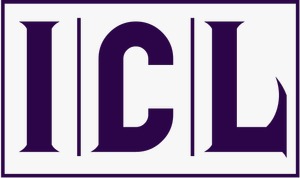ASSESSING THE LEVELS OF SELF EFFICACY OF TRADITIONAL AND MODERN MADRASA STUDENTS OF SECONDARY LEVEL: A COMPARATIVE ANALYSIS
Keywords:
Traditional Madrasa, Self-Efficacy, Aama, Guidance, CounsellingAbstract
This study explored the self-efficacy beliefs of students in traditional and modern madrasas at Aama level. Self-efficacy of traditional and modern madrasa students was compared to observe the variation in self-efficacy in their educational context and also determine the usefulness of modernizing tendencies dominating among modern madrasas. The study was quantitative in nature, so a survey design was used to obtain data from the participants. The sample consisted of 300 students of traditional and modern madrasas that were taken purposefully. For quantitative data collection, 28 items measuring the self-efficacy beliefs were prepared, measuring four aspects of self-efficacy belief such as academic, emotional, general and social. To ensure the content validity, experts opinion was obtained. The Cronbach-alpha value was 0.86. The findings of this study described that a significant difference was present in self-efficacy between students from traditional and modern madrasas. It was found that the students from modern madrasas had higher self-efficacy than the students from traditional madrasas. The findings also revealed that different types of madrasa environments had an effect on student self-efficacy, students of modern madrasas having higher in domains of learning, emotional, social, and general self-efficacies than the students of traditional madrasas. It is suggested that the programs of guidance and counselling should be encouraged in madrasas. Teacher training programs should also be encouraged in madrasas. There should be all round development of madrasa students including physical, social and emotional. Government should play its role in contemporary education in all madrasas irrespective of modernism and traditionalism
References
Aldridge, J. M., Galos, S., (2020). Relationships between learning environments and selfefficacy in primary schools and differing perceptions of at-risk students. Learning Environments Research, 231–247. https://doi.org/10.1007/s10984-020-09323-0
Al Momani, A., & Yousaf, A. (2018). Perceived Self-Efficacy and Academic Achievement among Jordanian Students. Trends in Technical & Scientific Research, 3(1), 4–9. https://doi.org/10.19080/TTSR.2018.03.555602
Arsalan, A. (2012). Predictive Power of the Sources of Primary School Students’ Self-Efficacy Beliefs on Their Self-Efficacy Beliefs for Learning and Performance. Educational Sciences: Theory & Practice, 1915-1920.
Abbas, F., & Iqbal, Z. (2018). Language Attitude of the Pakistani Youth towards English, Urdu and Punjabi: A Comparative Study. Pakistan Journal of Distance and Online Learning, 4(1), 199-214.
Bandura, A. (1977). Self-efficacy: Toward a Unifying Theory of Behavioral Change. Psychological Review, 191-215.
Bandura, A. (1982). Self-Efficacy Mechanism in Human Agency. New York: AMERICAN PSYCHOLOGIST.
Bandura, A. (1997). Self-Efficacy: The Exercise of Control. New York: Worth Publishers. Barry, Z. (2014). Becoming a Self-Regulated. Theory into Practice, 64-70.
Bhatti, A. M., Abas, F., & Rana, A. M. K. (2020). An Empirical study of learning styles used by undergraduate English learners in public sector colleges in Pakistan. Elementary Education Online, 19(3), 1864-1864.
Fraser Barry. J. (2012). Classroom learning environments: Retrospect, context and prospect. In B. J. Fraser, K. G. Tobin, & C. J. Mc Robbie (Eds.), Second international handbook of science education (pp. 1191–1239). New York: Springer. https://doi.org/ 10.1007/978-1-4020-9041-7_79
Genc, G., Kulusaklı, E., & Aydın, S. (2016). Exploring EFL Learners’ Perceived Self-efficacy and Beliefs on English Language Learning. Australian Journal of Teacher Education, 41(2), 53–68. https://ro.ecu.edu.au/ajte/vol41/iss2/4/
Gregg, P., & Goodman, A. (2010). Poorer children’s educational attainment: how important are attitudes and behavior? (pp. 1–72). Retrieved from: www.jrf.org.uk
Iqbal, A., Ali, M. S., Abbas, F., Shah, M. A. H., & Anjum, S. (2020). A Study of Work-Family Conflict among Elementary School Teachers. International Journal of Innovation, Creativity and Change, 14(10), 198-209.
Jerusalem, M. (1995). Measures in health psychology. A user’s portfolio: Causal and control beliefs. 35-38.
Kirk, B. A., Schutte, N. S., & Hine, D. W. (2008). Development and preliminary validation of an emotional self-efficacy scale. Personality and Individual Differences, 45(5), 432–436. https://doi.org/10.1016/j.paid.2008.06.010
Kirk, K. (2020, October 10). Self-Efficacy: Helping Students Believe in Themselves. Retrieved from https://serc.carleton.edu/NAGTWorkshops/affective/efficacy.html
Kowl, R. B., Fisher, D., & Shaw, T. (2011). An application of the TROFLEI in secondaryschool science classes in New Zealand. Research in Science & Technological Education, 29(2), 147–167. https://doi.org/10.1080/02635143.2011.573475
Madani, H. (2012). Uloom e Islamia ki Meari Taleem; Waqet ki Ahem Zrooret. Mohadith, 356, 32-36.
Naruponjirakul, S. (2020). Exploring the English Self-Efficacy of L2 Graduate Students. Conference Paper, Faculty of Arts, Dhurakij Pundit University, Thailand, 49–56. https://www.researchgate.net/publication/341283954_Exploring_the_English_SelfEfficacy_of_L2_Graduate_Students
Palinka, L. A. (2016). Purposeful sampling for qualitative data collection and analysis in mixed method implementation research. HHS Public Access.
Schmitz, M. (2012). Survey Research: A Quantitative Technique. Retrieved March 2021, from https://2012books.lardbucket.org/books/sociological-inquiry-principles-qualitativeand-quantitative-methods/s11-survey-research-a-quantitative.html
Rana, A. M. K., Bhatti, A. M., & Mahmood, M. R., (2020). Inclusion of Islamic Beliefs in ESL Teaching at University Level in Lahore. Al-Qalam, 25(2), 394-415.
Azim, M. U., Hussain, Z., Bhatti, A. M., & Iqbal, M. (2020). ‘Observable Signals’ of Motivation in Teaching-Learning Process. Journal of Communication and Cultural Trends, 2(1).
Schwarzer, R., & Renner, B. (2000). Social-cognitive predictors of health behavior: Action self-efficacy and coping self-efficacy. Health Psychology, 19(5), 487–495. https://doi.org/10.1037/0278-6133.19.5.487
Shi, H. (2018). Self-Efficacy Beliefs and Effective Instructional Strategies: U.S. University English Learners’ Perspective. International Journal of Teaching and Learning in Higher Education, 30(3), 477–496. http://www.isetl.org/ijtlhe/
Siritararatn, N. (2013). English Self-Efficacy Beliefs of EFL Low Proficiency Graduate Students. Academic Journal of Interdisciplinary Studies, 461–468. https://doi.org/10.5901/ajis.2013.v2n3p461
Sohil, F. (2019). Effects of Academic Resilience on Institutional Stability and Self-Efficacy of Students at University Level (Ph.D.’s thesis). Government College University, Faisalabad. http://prr.hec.gov.pk/jspui/handle/123456789/11888
Weng F., Cheong F. & Cheong C. (2009). IT Education in Taiwan: Relationship Between SelfEfficacy and Academic Integration Among Students. Pacific Asia Conference on Information Systems (PACIS), 243–261. https://aisel.aisnet.org/pacis2009/22/
Zajacova, A., Lynch, S. M., & Espenshade, T. J. (2005). Self-Efficacy, Stress, and Academic Success in College. Research in Higher Education, 46(6), 677–706. https://doi.org/10.1007/s11162-004-4139-z
Downloads
Published
How to Cite
Issue
Section
License

This work is licensed under a Creative Commons Attribution-NonCommercial-NoDerivatives 4.0 International License.

